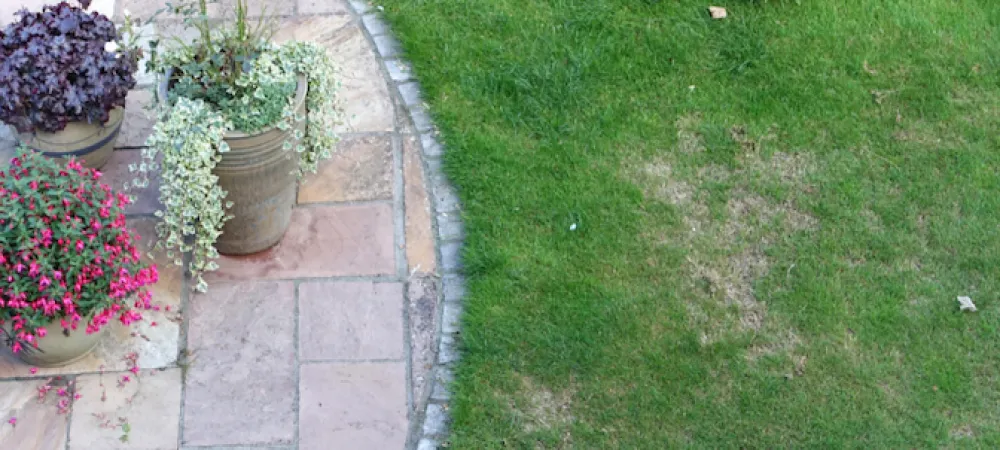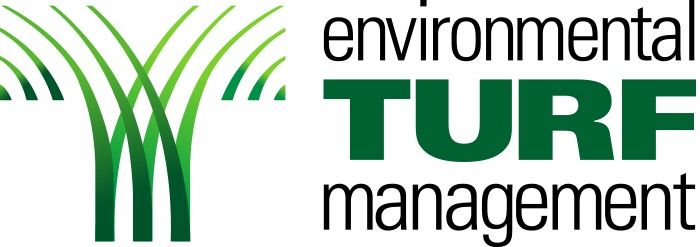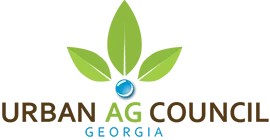Identifying and Preventing Lawn Diseases in Georgia

Springtime is an important time for lawn care here in Georgia. Because of our climate, we have an earlier and wetter spring than most of the rest of the country. Combine that with our hot, humid springs and summers and you have the recipe for fungi and other lawn diseases that can damage or kill your grass. We all know how long it takes to fill in a dead patch of grass so stay vigilant and be on the lookout for these common lawn diseases.
Brown Patch
Brown patch is a fairly common lawn disease in Georgia that affects all grass types. It is most common when grass remains damp for over 10 hours. Brown patch presents itself as brown circular patches that can range in size from inches to several feet in diameter. Brown patch favors high humidity and temperatures above 80°F during the day and over 60°F at night. This disease can be quite active at cool temperatures on warm-season grasses in the spring and fall. It also occurs in areas that experience more than 10 hours a day of foliar wetness for several consecutive days. The disease can weaken your lawn making it easier for weeds and pests to gain a foothold.
Preventing Brown Patch
The best way to prevent brown patch in your lawn is to adopt better irrigation practices. Water early enough so your grass has time to dry out before night. Aerating your lawn can relieve your lawn of many problems such as thatch buildup, compact soil, and better drainage which can help prevent brown patch.
Large Patch
Large patch is similar to brown patch except it only attacks warm-season grasses and here in Georgia, most lawns are made of warm-season grasses. Grass such as zoysiagrass, Bermudagrass, St. Augustinegrass, and centipedegrass are prime targets for large patch. Large patch appears as bigger circular or irregularly shaped patches that can grow to 25 feet or more. Large patch is another disease that loves hot, humid climates.
Preventing Large Patch
As with brown patch, to prevent large patch you need to pay attention to when you water and aerating your lawn won’t hurt.
Fairy Ring
Fairy rings appear in lawns in the spring and appear as dark green or brown rings in the grass. Sometimes mushrooms can be seen growing in the ring. In the past, they were thought to appear after fairies had danced in an area and believed to be special. But these rings are actually caused by high levels of organic matter, and in areas where trees have recently been removed. Fairy ring can come back bigger every year and have been known to grow to several hundred feet in diameter. Although fairy rings look mysterious and magical, they are caused by a fungus that causes the affected soil and grass to repel water. Eventually, the grass dies of dehydration.
Preventing Fairy Ring
Use a rake to break up the thatch inside fairy rings and aerate the soil. This allows water to get past the water-repelling fungus and reach the roots. Sterilize your tools after using them so you don’t spread the infection to other parts of your lawn.
Anthracnose
Anthracnose is a common tree disease but it can also infect turfgrass during warm weather in spring and summer. It causes irregular patches of yellow to brown grass. Black and yellow lesions can also appear on the blades of grass. The disease causes the stem and leaf sheath to rot and eventually detach. Anthracnose enjoys temperatures over 80°F. It usually occurs in areas that experience more than 10 hours a day of moisture for several consecutive days. Compacted soil and low pH levels can also make the disease worse.
Preventing Anthracnose
To prevent anthracnose start be raising your mower height and consider using a walk-behind mower in the area to reduce the amount of weight on the grass. Cut down on foot traffic and consider getting your lawn aerated.
Hire The Experts at Environmental Turf management
At Environmental Turf Management, we know how hard it is dealing with lawn care and all the chores that go with it. Let us take the burden of lawn care off of your plate next year. Sign up for our year-round lawn care program and never have to deal with weeds again.
Give us a call at (770) 467-3851 for more information on how you can get started. You can also request an easy quote here. For more monthly tips on all things lawn care, check out our blog and follow us on Facebook and Twitter for our current deals and news.



